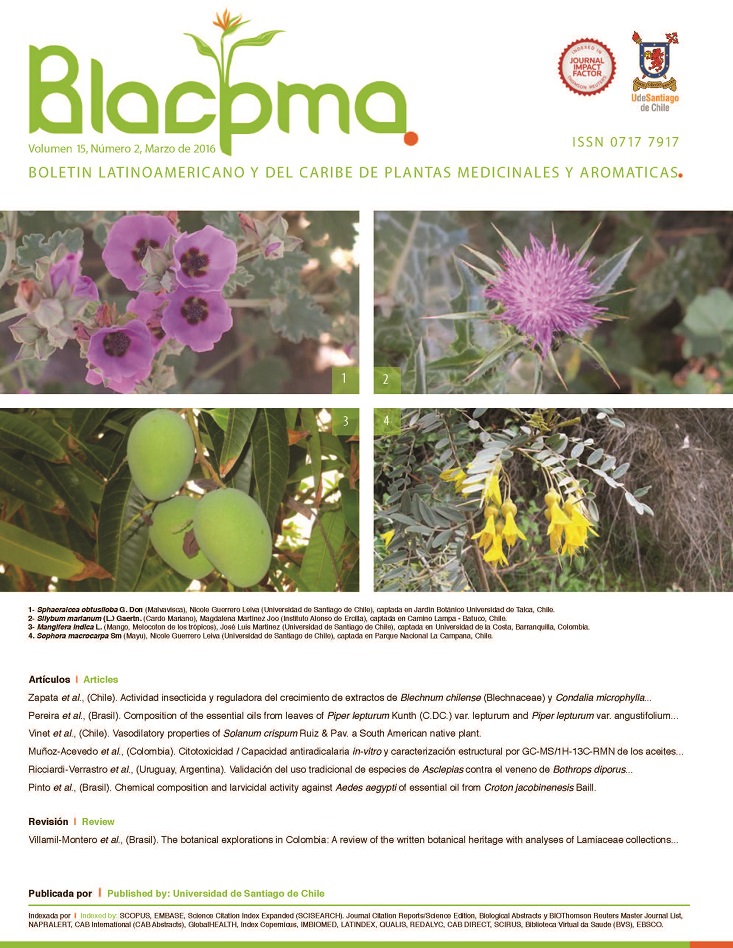Validation of the traditional use of Asclepias species against Bothrops diporus (yarará chica) venom in Northeast of Argentina
Keywords:
Alexiteric activity, In vitro activity, Asclepia mellodora, Asclepia curassavicaAbstract
The Aclepiadaceae family has been reported by its use in ethnomedicine. In the northeast of Argentina, A. mellodora and A. curassavica are traditionally used in ofidic accidents as poultices. In this work, aqueous, alcoholic and hexanoic extracts were analyzed by SDS-PAGE to determine their anti-snake activity. The in vitro study of the inhibitory ability of the following activities: proteolytic, indirect hemolytic activity and inhibition of the coagulant activity, allowed demonstrating that both species were active against venom, being A. mellodora the most active. Statistically, all extracts of A. mellodora were active against venom in the inhibition of the coagulant activity, without significant differences with respect to the organ used; which is consistent with the traditional use as external poultice. The alcoholic extract of A. mellodora roots was subjected to a bio-guided separation. The fractions obtained were enriched in compounds which could probably be responsible for the activity against venom.
Downloads
Downloads
Published
How to Cite
Issue
Section
License

This work is licensed under a Creative Commons Attribution-NonCommercial-NoDerivatives 4.0 International License.

